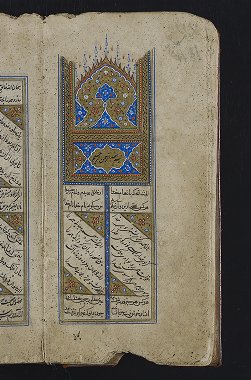Ghazal facts for kids
A ghazal (pronounced "guh-ZAL") is a special type of poem. It has rhyming pairs of lines called couplets. Each ghazal also has a repeating part, known as a refrain. All the lines in a ghazal share the same rhythm or meter.
Ghazals often talk about two main feelings. They explore the sadness of losing something or someone. But they also celebrate the beauty of love, even when things are difficult. This poetic form is very old. It first appeared in Arabic poetry around the 6th century. It grew from an Arabian poem called a qasida, which praised important people.
Contents
What is a Ghazal?
The ghazal is a unique kind of poem. It has a very strict structure. Think of it like a puzzle where all the pieces must fit perfectly. Even with these rules, ghazals can express many different ideas. They always focus on the main themes of love and feeling separated.
This poetic form is one of the most important gifts from the Indo-Persian and Arabic cultures. It spread across the eastern Islamic world.
History and Spread of Ghazals
Ghazals became popular in South Asia around the 12th century. This happened because of Sufi mystics, who were spiritual teachers. Also, the new Islamic Sultanates helped spread the form.
Today, ghazals are mainly found in Dari and Urdu poetry. However, you can find them in many other languages across the Indian subcontinent.
Famous Ghazal Poets
Many famous poets have written ghazals. Some well-known Persian mystics and poets include Rumi (from the 13th century) and Hafiz (from the 14th century).
Other important ghazal writers are:
- Fuzuli (16th century), an Azeri poet.
- Mirza Ghalib (1797–1869).
- Muhammad Iqbal (1877–1938).
The ghazal even became popular in Germany during the 19th century. This was thanks to the famous writer Johann Wolfgang von Goethe (1749–1832). Poets like Friedrich Rückert (1788–1866) and August von Platen (1796–1835) also used this form.
More recently, the Kashmiri-American poet Agha Shahid Ali loved ghazals. He even put together a collection of ghazals written in English.
The Poet's Signature: Takhallus
In many ghazals, the poet's name is included in the very last verse. This special tradition is called takhallus. It's like the poet's signature within the poem itself.
Images for kids
See also
 In Spanish: Gazal para niños
In Spanish: Gazal para niños




